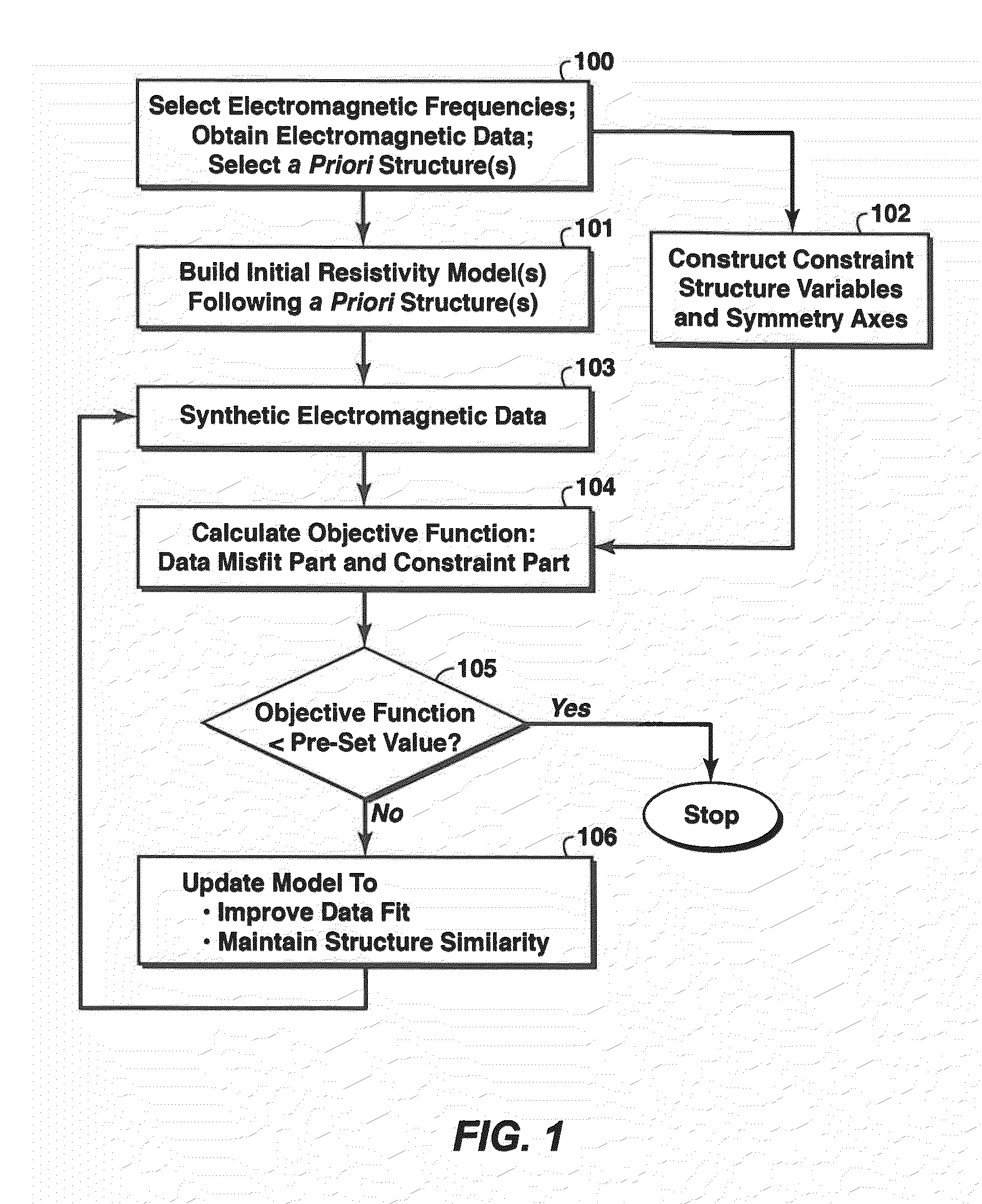Even with these different types of regularization, the resistivity images from CSEM data inversions generally still lack
structural consistency with subsurface structure derived from other sources, such as seismic data.
This structure inconsistency makes geological interpretation difficult and the prediction of
hydrocarbon presence less reliable.
Since the subsurface rock properties are both anisotropic and inhomogeneous over the distances probed by geophysical data, it is often difficult to unravel intrinsic from structurally-induced
anisotropy.
Such straightforward electrical inversion can fail to predict the orientations of the symmetry axes (even on
synthetic data from a simple model) when the orientations vary in space (Pain, et al, 2003).
It is difficult to derive reliable orientations of symmetry axes and principle resistivities from the measured CSEM data in geological settings encountered in
hydrocarbon exploration, and it is even more difficult to correlate the derived orientations to that from other sources, such as seismic data.
In any event, the problems of inverting CSEM data to a resistivity model that is consistent with the subsurface structure derived from other sources, such as seismic data, can not be achieved by those common regularizations without utilizing the a priori structure information.
Due to the complexity of the subsurface rock, it is very challenging to build rock
physics relationships that work for the wide variety of rock mixtures.
Moreover, different geophysical data types respond to changes in subsurface properties over very different length scales, making it ambiguous how the properties should be averaged into the rock-property relationships.
These errors and complexities make the practical application of this direct method of joint inversion difficult.
The inversion usually breaks this consistency due to the discrepancy between the starting model and the actual subsurface resistivity, limited data coverage, resolution, and non-uniqueness.
This method is both labor-intensive and computationally inefficient.
It becomes impractical or can fail to converge to the correct answer when more than two types of data are included.
In practical application, it is very difficult for the two images to converge to the same structure due to factors such as the limited data coverage, rapid decay of the electric fields, subsurface
anisotropy, unknown orientations of symmetry axes, and errors in the initial electrical and seismic models.
These factors can lead to model gradients that are very poorly behaved (poorly correlated with the seismic data) during the iterations.
Also, the subsurface
anisotropy, which is important for the inversion of electromagnetic data, is not addressed by this cross-
gradient method.
These authors, moreover, specifically add a regularization term to penalize the intrinsic anisotropy of the unknown material, apparently on the theory that allowing the intrinsic resistivities to vary freely can result in erroneous solutions and that the most realistic solutions are those with the smallest anisotropy.
Since the subsurface rock properties are both anisotropic and inhomogeneous over the distances probed by geophysical data, it is often difficult to unravel intrinsic anisotropy (a property of the rocks) from structurally-induced anisotropy (an aggregate property of rocks).
Simply forcing both the resistivities and orientations of the electrical symmetry axes to follow the same a priori structure during CSEM inversion may not generate geologically-consistent and reliable orientations of the electrical symmetry axes.
The error in symmetry axis orientations will translate to error in the resistivity images, which can
impact the interpretation of the subsurface.
The non-uniqueness problem exists in most geophysical data inversions, and is especially true for CSEM data due to the
low resolution and
exponential decay of the fields.
All these factors combined with the complex geological settings encountered in
hydrocarbon exploration make the prediction of the full anisotropic resistivities, especially the orientations of the symmetry axes, difficult using CSEM data alone.
 Login to View More
Login to View More  Login to View More
Login to View More 


